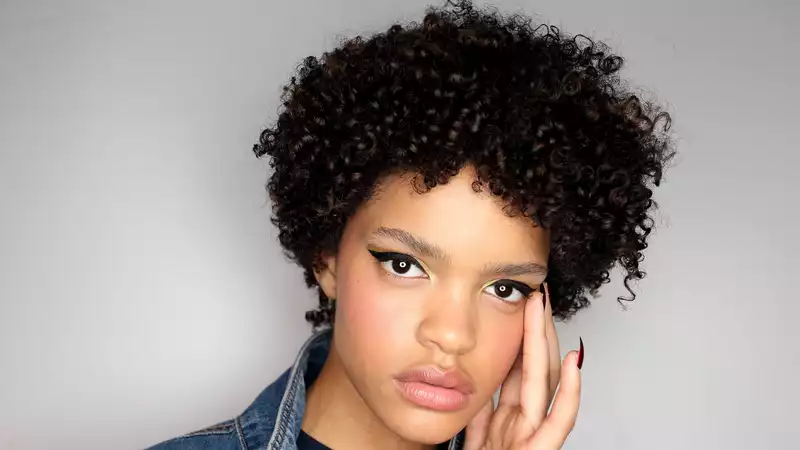
A dermatologist teaches how to reduce the appearance of pores.
Let's be clear: You can't "erase" or "eliminate" pores. Whether you like pores or not, they are a structural layer of the skin and will always be there. So please ignore masks and strips that promise to "erase" pores - that won't happen unless you remove a layer of skin. For example, if your pores are noticeable and bothering you, your pores are probably wider, deeper, or more prominent than you would like. That's probably because your pores are clogged or not as tight as you would like. Fortunately, you can do something about it.
The size of your pores is genetically determined, so there are some things you can't change. However, you can unclog pores, shrink them (opening them with new tabs), and generally make them as inconspicuous as possible. So even if you can't do much about the pores themselves (unless, as mentioned earlier, you want to remove an entire layer of your skin), you can minimize their appearance until everyone is saying "what pores?"
This brings us to two ways you can address your pores: by getting rid of them (opens in new tab), that is, by getting rid of all the gunk in your pores that makes them look more prominent, and By tightening them. Yes, with the right treatment, we can effectively shrink our pores. Lucky for you, we carefully showed you how to do that earlier.
No, these are not acids that will burn off your skin, but yes, the idea of soaking your face in acid seems terrifying. Still, alpha hydroxy acids (AHAs) and beta hydroxy acids (BHAs) are the holy grail of ingredients when it comes to penetrating and "cleaning" pores. As a result, they prevent pores from growing.
"AHAs and BHAs dissolve the bonds between cells and the skin's surface, essentially 'unclogging' pores," says dermatologist Joshua Zeichner, M.D., director of cosmetic and clinical research at Mount Sinai Hospital in New York (opens in new tab).
Both acids exfoliate at the cellular level, but AHAs work on the surface layer of the skin, making it brighter and smoother (and more tolerable for dry and sensitive skin). At the same time, BHAs penetrate deeper to remove dead skin cells from pores (i.e., blackheads), making them incredibly ideal for oily, acne-prone skin.
If you're not sure which acid to try, start with the cult favorite Paula's Choice Skin Perfecting 2% BHA Liquid (opens in new tab). Simply apply every other night to clean, dry skin, let sit for 10 minutes, and then apply the rest of your skin care products.
Further proof that retinol is truly amazing: not only does this vitamin A-based topical smooth wrinkles and lighten blemishes, it also stops acne and shrinks pores. The magic of retinol comes from its ability to increase collagen production in the skin while simultaneously reducing oil production.
Retinol can be irritating at first (you will probably have a week of dry, flaky skin after you first start it, but stick with it), so you You want to use a gentle formula such as: on the opposite day of BHA/AHA use, apply a pea-sized amount of the moisturizer to clean, completely dry skin every other night, wait 5 minutes for absorption, and then apply the moisturizer.
People with very dry, sensitive, or rosacea-prone skin may use retinol only once a week for one week, twice a week for two weeks, or three times a week for three weeks to help soothe irritation and build skin tolerance. It should then be used every other night indefinitely, only if there is zero irritation at that point.
If the fact that one in five Americans will develop skin cancer in their lifetime doesn't make you want to wear sunscreen (and it absolutely should), the fact that sunscreen can help reduce the appearance of pores may sway you.
"The sun destroys the collagen in your skin that is responsible for keeping your face firm and elastic, leaving you with larger pores and more elastic skin after repeated exposure," says dermatologist Rachel Nazarian, MD, of Schweiger Dermatology in New York. D. (open in new tab), says. So apply at least SPF 30 every morning-no, a foundation with SPF 15 won't cut it, like Marie Claire's favorite CeraVe Sunscreen Face Lotion for Acne-prone Skin. (opens in new tab)
"Lasers are a great way to address pore problems," says Dr. Nazarian. She prefers less invasive, such as Laser Genesis, over the Fraxel laser, which zaps microscopic holes in the skin to resurface deep acne scars and uneven pores. [Laser Genesis stimulates the deepest layers of the skin to smooth and plump the complexion with minimal pain. But of course, it comes at a cost (about $300 per session, and the results are permanent but require at least three sessions). So consult your dermatologist to decide which treatment is right for your skin and your wallet.
If all else fails, or if the above sounds like a lot, I recommend an editor-approved foundation (opens in new tab), whether it's a BB cream, a full-coverage foundation, or an SPF tint, that will reduce the appearance of pores and keep your skin looking its best I prefer a formula that will keep my skin looking its best. Because, honestly, there is no skin problem that really good makeup can't handle.
.
Comments